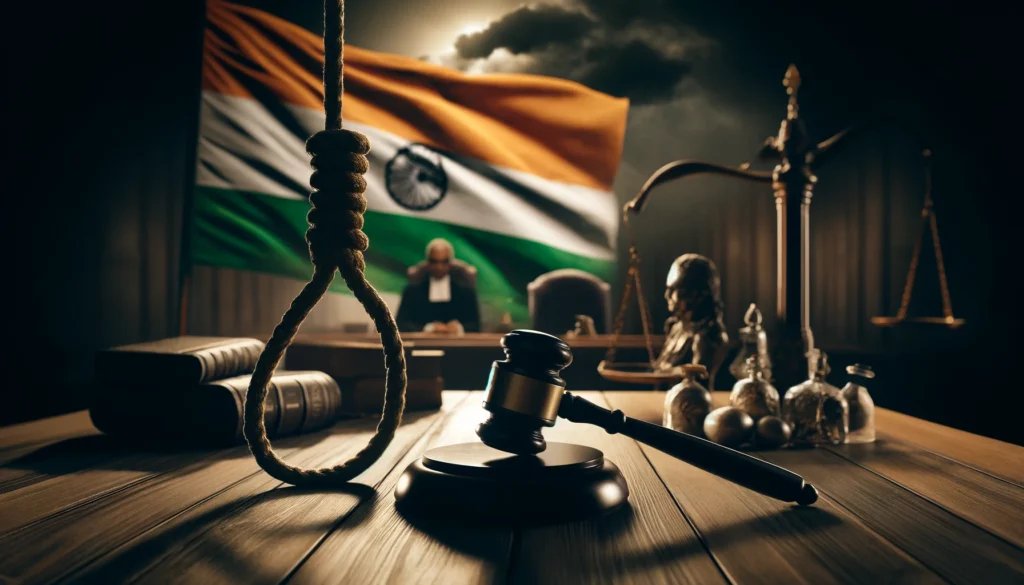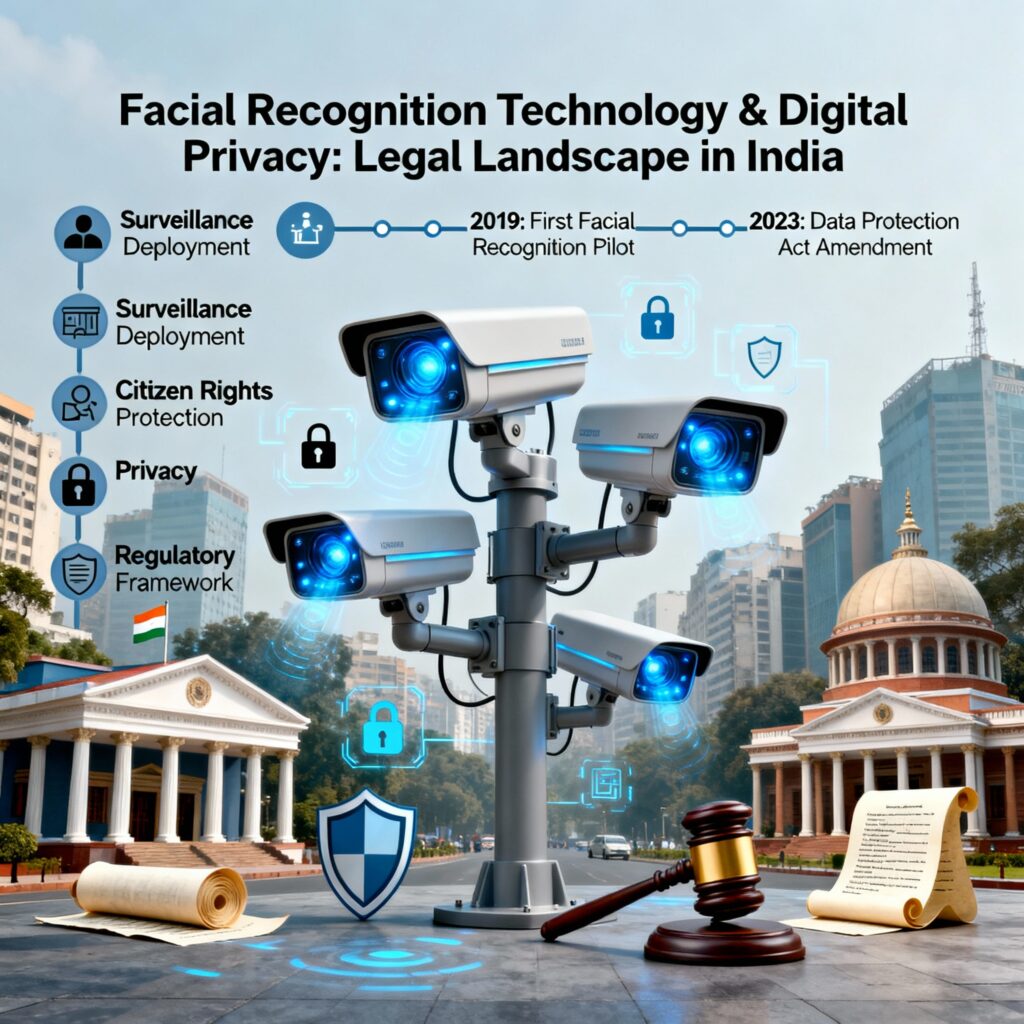Published on: 24th November 2025
Authored by: Charu Seth
Bharati Vidyapeeth New Law College, Pune
Introduction
The case of Kantaru Rajeevaru v. Indian Young Lawyers Association (2020) marks a pivotal moment in Indian constitutional law. It stems from a larger conversation about the right to worship, gender equality, and the extent of religious freedom as outlined in the Constitution of India. Essentially, this case is a review petition challenging the landmark 2018 Supreme Court decision in Indian Young Lawyers Association v. State of Kerala (2018), where a 5-judge bench ruled against the Sabarimala Temple’s ban on women aged 10 to 50 entering the temple.
The 2020 ruling, handed down by a 9-judge bench, didn’t outright reverse the 2018 decision but instead tackled broader constitutional issues related to Article 25 (Right to Freedom of Religion) and Article 26 (Freedom to Manage Religious Affairs). This analysis will explore the legal reasoning, implications, and the evolution of doctrine that emerged from the 2020 review judgment.
Background and Genesis of the Dispute
The Sabarimala Temple in Kerala is one of the most renowned Hindu shrines, dedicated to Lord Ayyappa, who is revered as a Naishtika Brahmachari (eternal celibate). Traditionally, the temple has barred women of menstruating age (10–50 years) from entering, citing the celibate nature of the deity and the temple’s core religious practices.
In 2006, the Indian Young Lawyers Association filed a Public Interest Litigation (PIL) with the Supreme Court, aiming to lift this ban. They argued that the practice infringed upon:
Article 14 (Right to Equality)
Article 15(1) (Prohibition of discrimination)
Article 25(1) (Freedom of conscience and free profession of religion)
In 2018, in the case of Indian Young Lawyers Association v. State of Kerala [(2018) 10 SCC 1], the Supreme Court ruled by a 4:1 majority that the ban was unconstitutional, asserting that:
The practice violated women’s fundamental rights. The devotees of Sabarimala don’t form a distinct religious group. The ban on women wasn’t a fundamental religious practice under Article 25. This led to a significant backlash from conservative and religious factions. More than 65 review petitions were submitted, culminating in the 2020 Kantaru Rajeevaru judgment.
Issues Before the Court
The key legal questions in the 2020 ruling included:
- Did the 2018 majority decision need to be revisited due to claims of judicial overreach?
- Is a religious practice that’s deemed essential to a faith protected under Article 25, even if it infringes on other fundamental rights?
- What is the extent of judicial review when it comes to matters of religion and belief?
- Are Articles 25 and 26 subject to the provisions of Articles 14 and 15?
- Can constitutional morality take precedence over individual or group religious practices?
- Is it within the courts’ purview to define what qualifies as an “essential religious practice”?
Composition of the Bench
The case was heard by a 9-judge constitutional bench consisting of:
S.A. Bobde, CJI
R. Banumathi, J.
Ashok Bhushan, J.
L. Nageswara Rao, J.
Mohan M. Shantanagoudar, J.
S. Abdul Nazeer, J.
B.R. Gavai, J.
Surya Kant, J.
Indu Malhotra, J.
Judgment Summary: Kantaru Rajeevaru (2020)
Citation: Kantaru Rajeevaru v. Indian Young Lawyers Association
The 2020 review judgment didn’t directly address the specifics of the Sabarimala ban but instead referred broader constitutional questions to a larger bench. Essentially, the court concluded:
The Essential Religious Practices Test (ERP) needs to be reassessed.
Articles 25 and 26 must align with constitutional morality and other fundamental rights.
Religious freedom isn’t absolute; it can be regulated for reasons of public order, morality, and health.
Determining what constitutes an ERP is a nuanced process and not entirely objective. It may need reevaluation.
The Sabarimala case shares similar issues with other ongoing matters, such as:
- The entry of Muslim women into mosques
- The entry of Parsi women into fire temples
- Female genital mutilation within the Dawoodi Bohra community
Therefore, the court decided that all these issues would be addressed together in the future by a larger bench to ensure consistency and clarity.
Key Constitutional Doctrines and Analysis
Essential Religious Practice (ERP) Doctrine:
This doctrine, which came from the Shirur Mutt case in 1954, allows courts to figure out if a practice is an “essential” part of a religion. However, it’s been criticized for putting judges in the position of interpreting religious texts.
In the Kantaru Rajeevaru case, the court raised some important questions:
Should judges really be acting as theologians?
Is the ERP a valid test within a secular Constitution?
While the court didn’t completely discard the ERP test, it did stress the importance of having clear doctrines.
Constitutional Morality vs. Popular Morality: The court made it clear that constitutional morality—which encompasses equality, liberty, and dignity—should steer how we interpret fundamental rights. This doctrine backs the notion that individual rights should take precedence over majority religious norms, especially when it comes to discriminatory practices.
Group Rights vs. Individual Rights: Religious groups under Article 26 have their rights, but those rights don’t supersede the Constitution. Article 25(2)(b) allows the State to open Hindu religious institutions to all Hindus, paving the way for reform. The court pointed out the ongoing tension between the autonomy of religious groups and the individual right to equality.
Critical Commentary
- Progressive Potential Deferred: Even though the 2018 verdict was a significant step forward for gender justice, the 2020 review judgment has effectively put the brakes on its implementation by sending the matter to a larger bench. This raises some concerns: Judicial activism in 2018 was countered by judicial restraint in 2020. Women’s rights are still in a state of uncertainty while we wait for further decisions.
- Need for Doctrinal Consistency: By grouping other religious issues with Sabarimala, the court rightly pointed out the necessity for a consistent legal approach. However, critics argue that: Different religions may have specific nuances that need to be considered.
- The Judiciary’s Role in Religion: This case really stirs up the ongoing conversation about how the judiciary interprets religion in a secular state. While it’s crucial for judicial review to keep outdated practices in check, stepping too far into religious matters can actually threaten the very essence of secularism.
Implications of the Judgment
Legal Uncertainty Persists: The final stance on Sabarimala is still up in the air until the larger bench makes a ruling.
Stalled Social Reform: For women devotees hoping to enter the temple, this verdict leaves a legal gap, putting their rights on hold.
A Standard for Religious Rights: This judgment paves the way for a structured approach to handle future claims under Articles 25 and 26.
Setting a Precedent for Similar Cases: The outcome will influence both ongoing and upcoming cases related to religious freedom, particularly where issues of gender, caste, or minority rights come into play.
- Socio-Political Context and Broader Implications
The Sabarimala controversy cannot be divorced from its broader socio-political context. The case emerged during a period when questions of religious freedom, gender equality, and cultural practices were becoming increasingly contentious in Indian society. The massive protests that followed the 2018 judgment, particularly in Kerala, demonstrated the deep-seated nature of these conflicts and highlighted the challenges faced by the judiciary when constitutional principles clash with deeply held religious beliefs.
The political ramifications were equally significant. The Bharatiya Janata Party (BJP) and other Hindu nationalist organizations capitalized on the religious sentiments surrounding the case, arguing that the Supreme Court’s intervention represented an attack on Hindu traditions. This politicization of the judicial process raises important questions about the independence of the judiciary and the extent to which popular sentiment should influence constitutional interpretation.
Furthermore, the case has international dimensions, as it reflects global conversations about religious freedom, women’s rights, and the role of law in social transformation. Countries worldwide grapple with similar tensions between traditional practices and evolving concepts of human rights. The Indian Supreme Court’s approach to balancing these competing interests will likely influence legal discourse beyond India’s borders.
The 2020 judgment’s decision to club together various religious practices affecting women across different communities also reflects a broader judicial strategy of seeking comprehensive solutions to systemic issues. This approach, while potentially more coherent in terms of legal doctrine, also risks oversimplifying the unique cultural and theological contexts of different religious traditions.
The delay in resolution has practical consequences for women’s empowerment movements in India. The uncertainty created by the referral to a larger bench has emboldened conservative forces while frustrating progressive activists who viewed the 2018 judgment as a crucial victory for gender equality. This tension illustrates the complex relationship between legal change and social transformation in diverse societies.
2. Relevant Case Laws Referenced
The Commissioner, Hindu Religious Endowments v. Sri Lakshmindra Thirtha Swamiar of Shirur Mutt, AIR 1954 SC 282
Durgah Committee v. Syed Hussain Ali, AIR 1961 SC 1402
Bijoe Emmanuel v. State of Kerala, (1986) 3 SCC 615
Shayara Bano v. Union of India, (2017) 9 SCC 1
Indian Young Lawyers Association v. State of Kerala, (2018) 10 SCC 1
3. Future Prospects and Anticipated Developments
The referral of the Sabarimala issue to a larger bench creates both opportunities and challenges for the future development of constitutional law in India. The expanded bench will need to address fundamental questions about the nature of religious freedom in a secular democracy and the limits of judicial intervention in matters of faith and tradition.
One key area that the larger bench will likely examine is the methodology for determining essential religious practices. The current ERP test has been criticized for its subjective nature and for placing judges in the position of theological interpreters. Alternative approaches, such as focusing on the fundamental rights implications of practices rather than their religious authenticity, may emerge from future deliberations.
The court will also need to develop clearer guidelines for balancing individual rights against community autonomy. This balance is particularly crucial in a diverse society like India, where multiple religious traditions coexist and where the state must maintain neutrality while protecting individual freedoms.
Conclusion
Kantaru Rajeevaru v. Indian Young Lawyers Association isn’t just a final ruling; it’s a stepping stone toward a deeper constitutional understanding. It highlights the fragile balance between faith and fundamental rights. While it doesn’t completely overturn the progressive 2018 decision, it does delay its impact and shifts the conversation to a broader discussion about religious practices in a diverse society.
The case represents a critical juncture in Indian constitutional jurisprudence, where the courts must navigate between respecting religious diversity and ensuring constitutional equality. The ultimate decision from a future larger bench will not only determine the fate of women’s entry into Sabarimala but will also establish precedents that will shape the landscape of religious freedom and gender justice for generations to come. The resolution of this case will serve as a litmus test for India’s commitment to both its secular principles and its constitutional promise of equality before the law.




